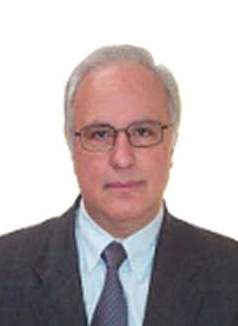- A Possible Theory for Particle Composition of Matter Based on Only Three Functional Quantum Particles (2011) [Updated 7 years ago]
- Older and Contemporary Attempts for Inertial Propulsion (2011) [Updated 1 decade ago]
- A Study of the Mechanics of an Oscillating Mechanism, International Journal of Mechanics, Volume 5, Issue 4, 2011, pp. 263-274. (2011) [Updated 1 decade ago]
- A Possible Theory for Particle Composition of Matter Based on Only Three Functional Quantum Particles (2011) [Updated 7 years ago]
This work presents the possibility of revising the standard model of subatomic
composition of matter, extending the ?inverse square law? from gravity and electric fields
to also the thermal effects. It is shown that assuming only three proposed particles and
only three relevant interactions, simple explanations can be provided for all natural
phenomena, particularly those in which the existing theory does not provide documental
and convincing answers. The paper starts with the description of a unique reaction
between two types of the proposed subatomic particles thus producing the so-called
?thermions' that finally form an elastic Cubic Energy Grid under mechanical stress. Then
the existence of the three known phases of matter is explained. The meaning of ?heat' is
redefined without focusing on the usual kinetic energy of atoms and molecules. The
elimination of anomalies in a closed system is explained through an asymmetrical
oscillation. Also, the paper attempts a new interpretation of the creation of the universe
from a huge electric discharge based on the simultaneous creation of the three subatomic
particles. It describes ?monopoles' as the first quantized agglomerates of pure energy and
explains why they bound to form ?dipoles', which later progressively form larger
agglomerates. In the sequence, it describes the crystallization as a first resistance line that
the nature foresight to avoid the self-destruction of the universe. The paper closes with
possible models of electron and positron as well as of neutron and proton based on only
the three proposed subatomic particles. At the same time, the equivalent mass of a
thermion as well as the quanta of positive and negative electric charges is determined. - Older and Contemporary Attempts for Inertial Propulsion (2011) [Updated 1 decade ago]
In this paper we review and critically present the state-of-the-art of inertial propulsion means, which may cause motion of the object to which they are attached. At the same time, we indirectly overview some other advanced propulsion systems by direct reference to the main bibliography. First we refer to the rotation of two synchronized masses that move along a circular path (Dean-drive). We prove that they can conditionally cause motion of the object and temporal lift. We also present some of our previous results concerning masses moving along a figure-eight-shaped path on the surface of a hemisphere, which also rotates around the axis of symmetry. We give particular attention to the proper synchronization that may instantly cause loss of weight or create such instability so as the object can be easily displaced by external means. Since the rotation is the key to the inertial propulsion, we discuss the role of the rotation in gyros as well as the possibility of the existence of an aetherometric mesh or the possible influence of time dilation, as claimed by others. This work is an extension of a one-hour presentation at the conference SPESIF-2011 (March 15-17, 2011, at University of Maryland, USA).
- A Study of the Mechanics of an Oscillating Mechanism, International Journal of Mechanics, Volume 5, Issue 4, 2011, pp. 263-274. (2011) [Updated 1 decade ago]


